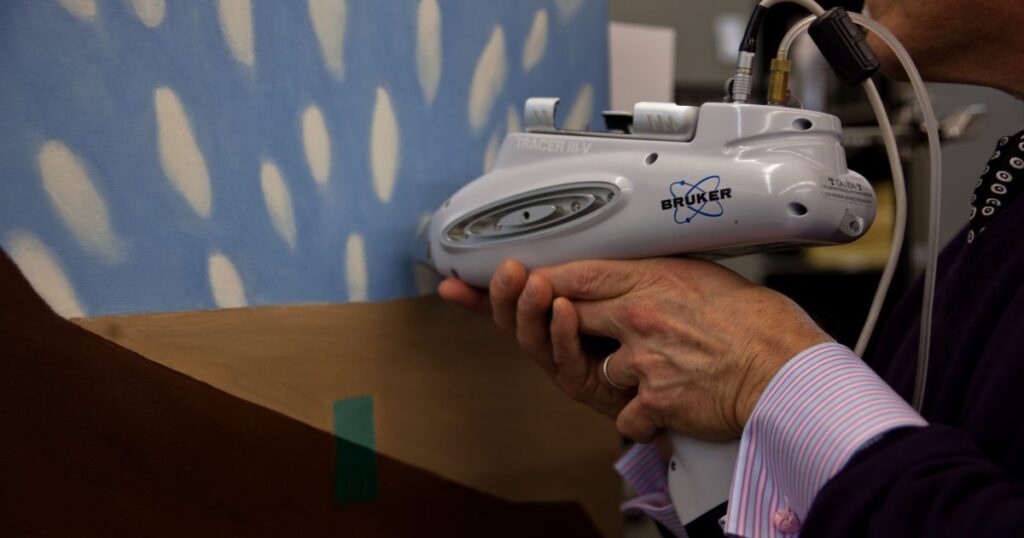Conservation

Preservation is at the heart of our mission. Our conservation program preserves the historic and artistic collections, homes and landscapes associated with Georgia O’Keeffe using the most advanced conservation practices, sophisticated scientific analysis, and innovative technologies. The Museum is the primary source for scientific and scholarly information concerning O’Keeffe’s artistic process and her use of specific artist’s materials and techniques.
Preservation
Ensuring that Georgia O’Keeffe’s art can be enjoyed by future generations is of paramount importance. By understanding the materials and techniques used by the artist during her long career, we are better able to identify and mitigate the conditions that threaten the stability and safety of her work while on view and when in transit.
Conservation is an essential aspect of managing our collection and preparing exhibitions and loans. All artworks are carefully documented and their condition assessed prior to display. During traveling exhibitions, works are closely examined before and after presentation at each venue to identify any changes in condition and provide remedial treatment when necessary. At home, the conservator works closely with curators and other museum staff to formulate long-term plans for the care and storage of all our collections, including artwork, archival documents, photographs, O’Keeffe’s personal property, and the contents and furnishings of the historic homes at Abiquiu and Ghost Ranch.
Analysis
We use advanced technologies to document and analyze the condition of artworks. This allows us to record the current condition and in many cases identify signs of aging and deterioration before they become visible to the human eye. These techniques include RTI (Reflectance Transformation Imaging), XRF (X-ray fluorescence), Photogrammetry, and Infrared Photography.
RTI is a method that captures how a complex material interacts with light—an important advance in our ability to investigate and monitor works of art that complements other imaging methods such as spectral imaging. While spectral imaging reports on surface phenomena, RTI provides information on the physical changes in the object itself as it reports on geometry. These changes include parchment cockling and distortion, movement of wood objects and flaking of stone, to name a few. All of these derive from changes in the complex surface geometry as measured by RTI.
Photogrammetry can be used to create 3D models of buildings or objects by taking overlapping images of an object, which are combined using software to create point clouds which are then translated into a 3D mesh. The mesh is covered with a texture comprised of photographic images giving it color and detail. These detailed surfaced maps can be used document an objects condition and monitor for changes.
Innovation
Innovation was a hallmark of Georgia O’Keeffe’s career. Following her model, the Museum has pursued the development of new techniques and technologies to better preserve her artwork.
Working with the Getty Conservation Institute (GCI) in Los Angeles, and the University of Texas at El Paso (UTEP), the Georgia O’Keeffe Museum developed a new light filter that selectively blocks the wavelengths of light that are most damaging to light sensitive artworks, allowing these works to be more brightly lit while doing substantially less damage than traditional museum lighting.
Similar ingenuity and creativity has been applied to develop improved methods for framing O’Keeffe’s artwork that are aesthetically true to her original frame choices while offering vastly superior protection.
Work continues to identify new and better ways to protect O’Keeffe’s legacy.